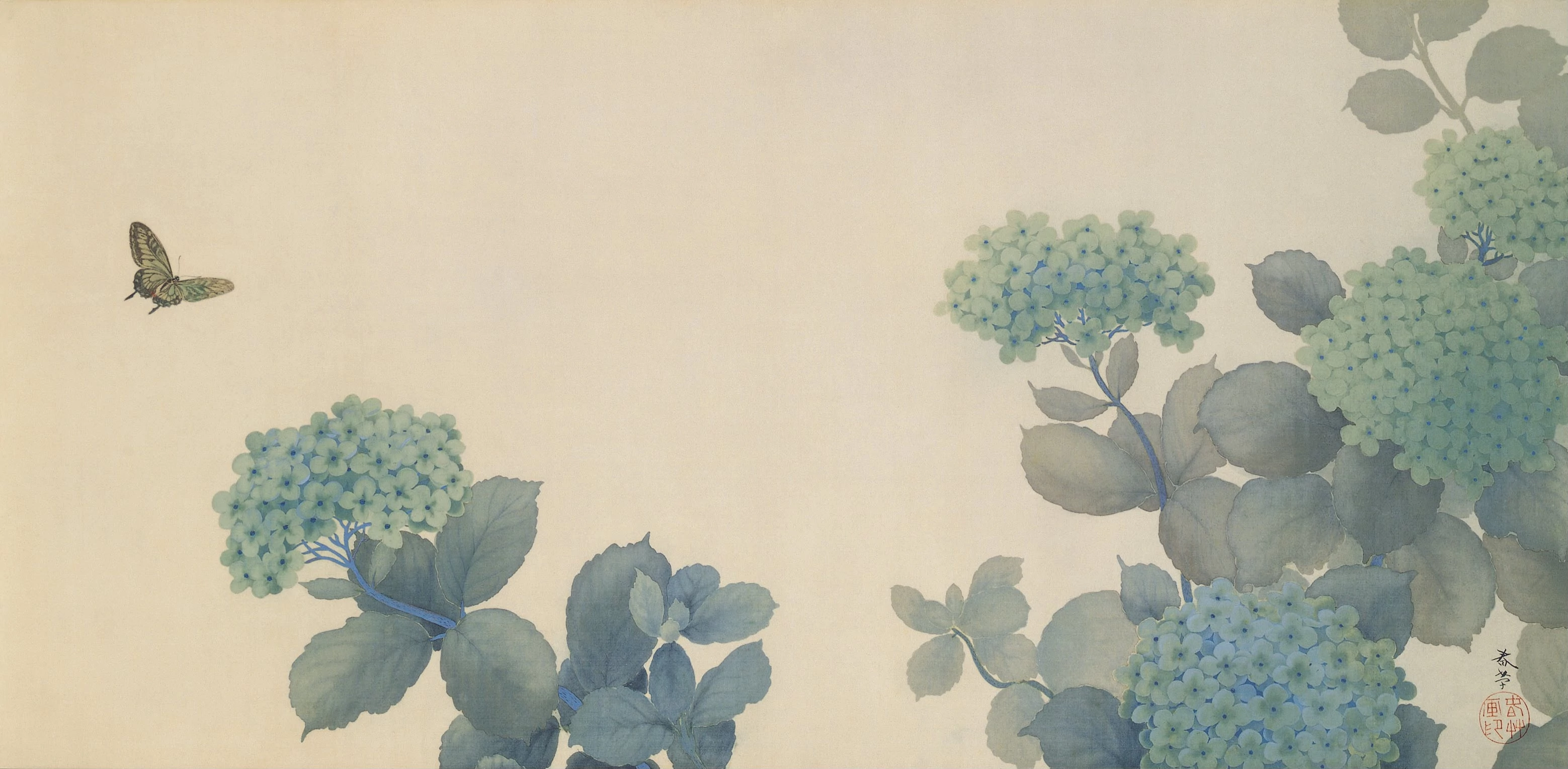Hishida Shunsō
A quiet boy paints cats in a new style




It’s difficult not to project an air of quiet sadness onto the life of Hishida Shunsō, a young painter working in Tokyo at the dawn of the 20th century. Shunsō worked at a crossroads in Japanese art, when the growing influence of Western culture had created a violent split between two competing artistic practices. Yōga painting was progressive, influenced by Western art and technique. Nihonga was the counter movement, an art style that harked back to Japan’s traditional techniques, materials and composition. Both movements were fraught with drama and heated debate, and in the middle of it all, Hishida Shunsō was painting cats.
But Shunsō wasn't just painting cats, he was painting them in a technique called karabake, the “dripping paint on a wet surface and then brushing it with a dry brush to get gradation effects and a degree of luminosity.” While Japan’s art world looked to the West and to their own history, Shunsō traveled abroad. In 1903, at age 29, Shunsō joined the scholar Okakura Tenshin on a two-year tour of Europe, the United States and India. Shunsō saw new worlds of art, and returned to Japan inspired by Mughal techniques and Chinese ink painting. Back in Tokyo, Shunsō debuted a new style at the Bunten exhibition at the Japan Art Academy. His new work was extraordinarily quiet, and carefully composed to make empty spaces, filled only by pale karabake gradients, the focus of the work. It’s a lovely, contemplative style, but Shunsō’s peers didn't think so.
Shunsō’s karabake minimalism was loathed by the art critics of the day, and mocked by his contemporaries—who termed his new style mōrōtai, or ‘vague.’ Shunsō tried to evolve, adding stronger line-work to his paintings, and deepening his color palette, but his health began to deteriorate. Shunsō’s kidneys began to fail, and with his kidneys, his eyesight. In his last years, he painted in rare moments of remission. Two years before his death in 1911, his painting Ochiba won the highest award at the Bunten exhibition. Finally, a recognition of Shunsō’s contribution to Japanese painting.
...
Got questions, comments or corrections about Hishida Shunsō? Join the conversation in our Discord, and if you enjoy content like this, consider becoming a member for exclusive essays, downloadables, and discounts in the Obelisk Store.